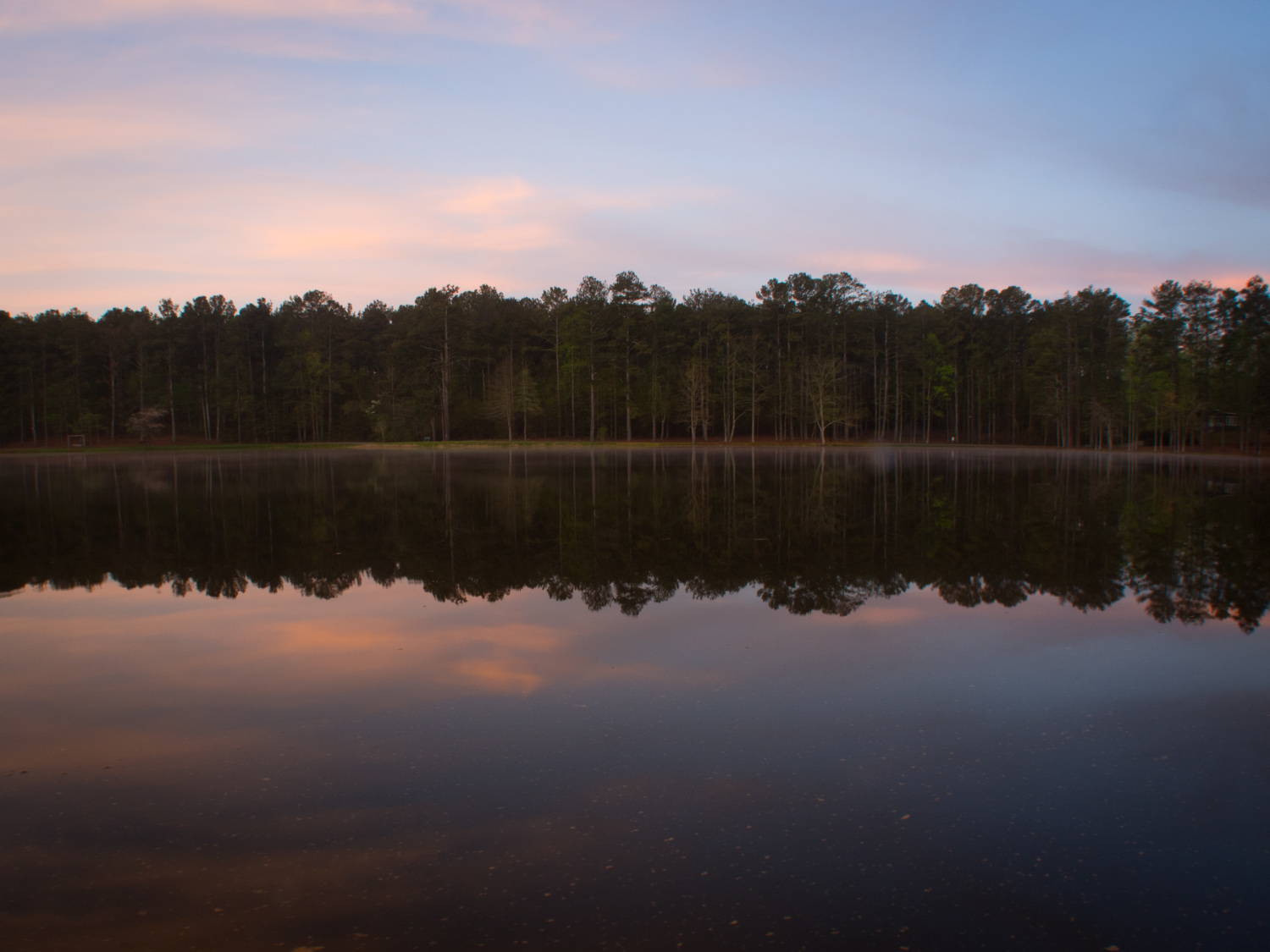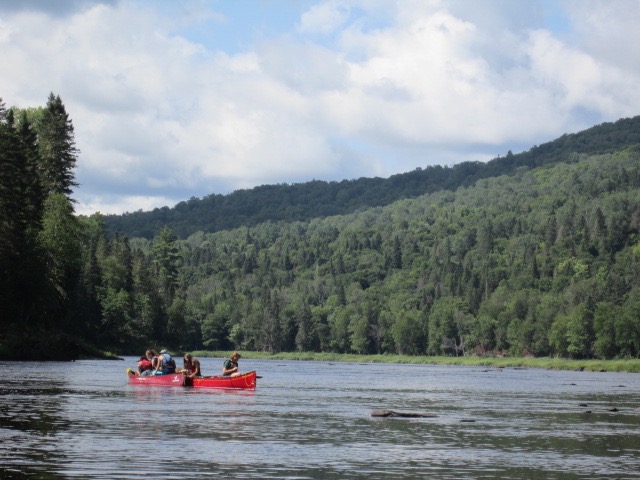Chewonki Girls

Chewonki! What? Chewonki Girls!
A three-week canoe trip down the Allagash Wilderness Waterway with the Chewonki Adventures for Girls Program
By Laura Stasi
“We have to do what?!” exclaimed the sixteen-year-old Puerto Rican girl in front of me. I had just told her that for the next three weeks we would be digging “cat holes” every time we had to go to the bathroom.
It was early summer in Northern Maine and I was taking ten teenage girls on a three-week canoe trip down the Allagash Wilderness Waterway. Half of the girls were experienced, meaning they were returning campers who had been exposed to camping, portaging, mosquitoes in Maine, and cooking over a fire. The other half were new to the Chewonki Adventures for Girls program—coming from places like Los Angeles, Boston and the Bronx—and had little idea of what they were in for.

The Chewonki Foundation has many facets, one of which is wilderness trips for kids. Not only was this my first summer working for Chewonki, but it was also my first time being responsible for others in a backcountry setting. Being the first all-female wilderness trip I had been on, I had no idea working with this group of young ladies would change the way I viewed myself as well as how I how I viewed the work I was doing.
Being the first all-female wilderness trip I had been on, I had no idea working with this group of young ladies would change the way I viewed myself as well as how I how I viewed the work I was doing.
The summer had been dry and the river was running low. In places it was so shallow that the weight of two paddlers and over a hundred pounds of gear caused the canoes to scrape the rocky river bottom. On one of our hottest days my co-leader and I reviewed our trip notes and knew that we faced roughly five miles of shallow water. I explained to our girls that we would have to ‘frog’ the next few miles; walking beside our boats and at times, navigating rather swift, waist high pools of water.
One of our participants who was on the trip as part of a college-prep program for inner-city kids, suffered from asthma and was overweight for a girl of fifteen. She had poor balance and had trouble keeping her feet under her as we waded through the water and over algae-covered rocks. It wasn’t long before she started tearing up, frustrated with herself and her lack of coordination and self-conscious that she was slowing the pace of the group. At the end of the day, during our nightly ‘evening council’ she shared that she had never felt more supported than she had that day as everyone gave her words of encouragement and patiently waited for her to regain her balance every time she ended up back in the water.

My girls were proud of their accomplishments after their 92-mile canoe trip. We portaged a total of seven or so miles over the course of the three weeks, teaching the girls to solo portage the 80-pound Old Town Trippers.
My girls were proud of their accomplishments after their 92-mile canoe trip. We portaged a total of seven or so miles over the course of the three weeks, teaching the girls to solo portage the 80-pound Old Town Trippers. Of course in the middle of our most difficult day as we portaged a three mile logging road between Round Pond and Allagash Lake, the heaven’s opened and unleashed one of Maine’s all-too-common lightning storms.
We were in the middle of eating lunch—spreading refried beans and cheese on soggy tortillas with a stick—on the road, with nothing but dense undergrowth on either side of us. Chewonki protocol requires that we get participants into ‘lightning drill’ during storms, meaning everyone sits on their life jacket a few feet apart from one another and tries to avoid lightning prone strike zones, hypothermia and boredom for as long as the lightning continues within a certain distance. The girls were exhausted, I was exhausted, and we were all a little dehydrated and wrung out from exertion and with the storm lashing around us. Mary almost passed out and while I was forcing Gatorade into her hands despite her persistent, “But I’m not thirsty!” Katya’s bootlaces got tangled, causing her to trip and cut her knee open on a rock. Dianna was shivering from exposure and my co-leader was feeding everyone snacks to keep their blood sugar up. Hours later, when the lightning had passed and we made it to our campsite, the feeling of relief from everyone was as obvious as the storm clouds lifting.

Towards the end of our trip we came to Allagash Falls, requiring that we do a quick one-mile portage around. There was a large group of Boy Scouts already at the take out and their boats were taking up most of the space at the landing. Our group, having been out for two and a half weeks at this point, knew the drill; pull the boats up on shore, unload gear, take gear to the next put-in and return for boats. We were organized and aware of other groups—we had taught the girls proper backwoods etiquette and amidst the chaos of the Boy Scouts, our five canoes neatly beached around their disorganization.
“Boys! Offer the ladies some help!” barked one of the Scouts’ fathers. “You girls need a hand with your boats?” he asked.
The girls looked to my co-leader and I, who politely declined the offer, explaining we had been on the river for a while now and could handle it just fine. Before the Boy Scouts had the chance to say anything else, our group was already hauling our river bags down the portage trail, passing bedraggled boys trying to pull their laden aluminum canoes over boulders and logs on rickety portage wheels. I’ll never forget the looks of amazement on their faces as they watched ten girls strut past with canoes over their heads, completing the entire portage in less than an hour while they cursed and complained as they lugged their boats down the rooted trail.

“You girls need a hand with your boats?” he asked.
The girls looked to my co-leader and I, who politely declined the offer, explaining we had been on the river for a while now and could handle it just fine.
I never expected working with girls to be so rewarding and well, special. There is something about their maturity, wisdom and unspoken connection with one another that makes it different from working with co-ed or male groups. I still have trouble putting it into words or explaining to others just why these trips are so unique and important.
There is something remarkable about how easy it is to form bonds and life-long memories over the hardships, heart-to-hearts and feeling of accomplishment that come from being on trail together.
Just like my girls will never forget pooping in the woods, walking for miles through shallow water, sitting in lighting drill and the looks they got from the Boy Scouts as they portaged past them without the help (or hindrance) of portage wheels, I will never forget the group hugs and tears that were shared as my girls boarded the bus back to their respective cities and homes.

Just like my girls will never forget pooping in the woods, walking for miles through shallow water, sitting in lighting drill and the looks they got from the Boy Scouts as they portaged past them without the help (or hindrance) of portage wheels, I will never forget the group hugs and tears that were shared as my girls boarded the bus back to their respective cities and homes.
Maybe it was because it was my first time leading a backcountry trip or simply because this particular group of girls was so hardworking, cooperative and caring, but I will always hold these memories close to my heart and be inspired by the power and strength that comes when women come together in the woods.
Laura Stasi is a dreamer and artist, finding most of her inspiration from nature and her own adventures. She loves staring at the stars, falling asleep to the sound of peepers, and walking barefoot. Discover more of her work at feathersandtracks.wordpress.com and on Instagram.
Photos courtesy of Laura Stasi, and banner image by Hailey Hirst
Boy Scouts weren’t prepared for that, were they?
I kinda wish something like this had existed when I was that age.